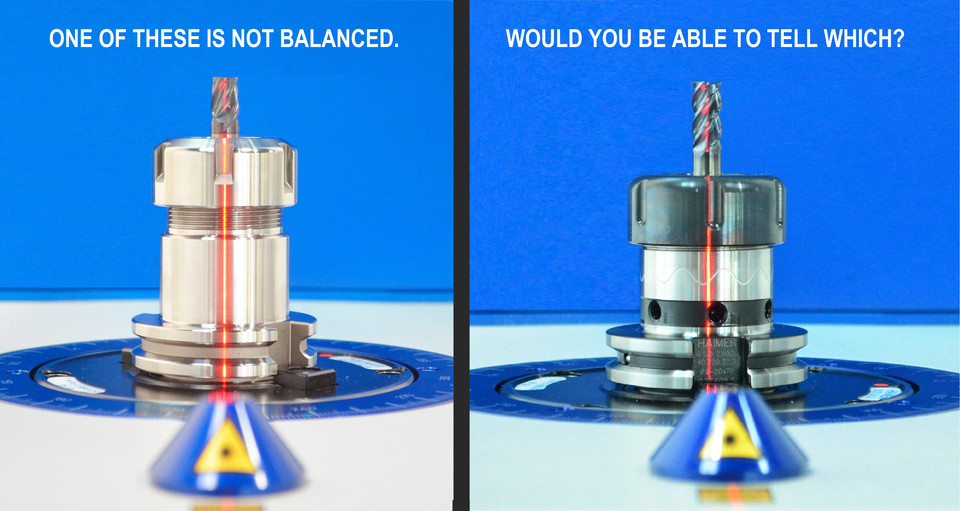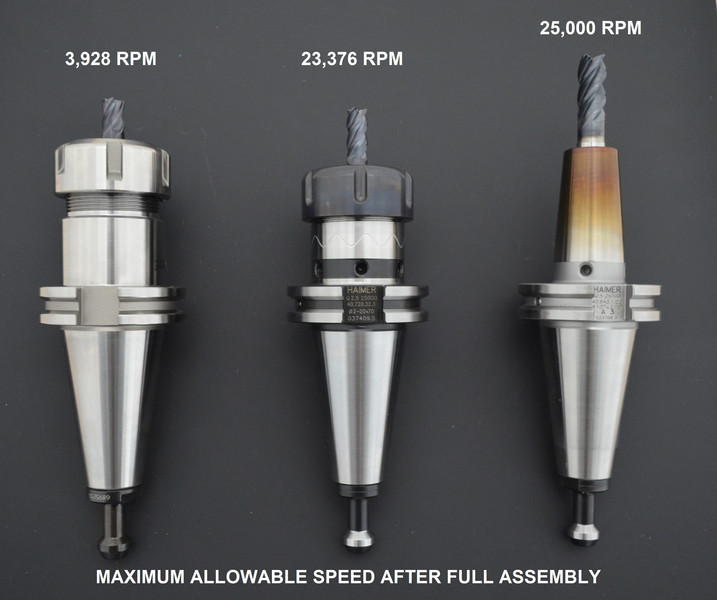If you’re lucky, the veterans in your shop will take a rookie aside and pass on their hard-won knowledge of good machining practices. Fantastic! Most of this information is priceless. But some of it…not so much. For example, there are a lot of myths about balancing out there that, if not refuted, can cost your operation a lot of lost time and money. In this article, Haimer will address these misperceptions and offer a more factual view of best practices for balancing toolholder assemblies.
Myth # 1: Balance Does Not Matter (Much)
Actually, balancing has become an industry standard best practice because it does matter. Look at some examples. Cutting tool manufacturers balance wheel packs prior to grinding. Toolholder manufacturers pre-balance the holder after production. Most machine tool builders insist on balanced assemblies (ISO1940-1: G2.5 at maximum RPM) to maintain warranties on their spindles. Leading aerospace/aircraft and automotive manufacturers in the US inspect the balance of every tool assembly prior to beginning production. These are industry leaders who definitely think balance matters. If you'd like to follow their example, Haimer can help.
For more basic needs:
- Tool Dynamic TD 1002 Balancing Machine: This machine is your start into the Tool Dynamic series. It is the ideal option for mold makers, small batch lots, single applications and standard chucks. It is the ideal in-house solution for balancing short toolholders and tools on one plane.
- Tool Dynamic TD Economic: For when you need to balance on one plane, but need something a little more in depth. This machine is also perfect for balancing short toolholders, but offers a base made of polymer concrete to achieve the highest measuring accuracy.





